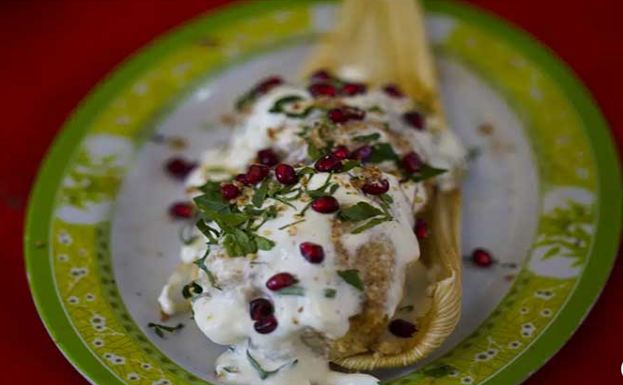MEXICO CITY – At least three times a week, Mexico City bus driver Nicolás Cuatencos stops by a stand selling tamales to pick up a “guajolota,” or “turkey.” It’s a corn husk-wrapped corn dough and salsa delicacy slid into a crusty bun, and it’s been his weakness since childhood.
“The flavour, the dough, all of that is really good,” a smiling Cuatencos said recently.
But tamales are not only delicious and a high-caloric way to fuel the work day. They also invariably carry nostalgia for millions like Cuatencos, who remembers his grandmother preparing tamales for family celebrations and religious festivals like Candlemas Day on Feb. 2.
On that day, Mexican tradition has it that whoever found the baby Jesus figurine in the Rosca de Reyes cake eaten on Three Kings Day on Jan. 6 has to buy tamales for the family on Feb. 2.
Even outside that holiday, vendors set up stands across the city before dawn at subway stops and street corners where tamales steam in giant pots fired by gas burners or charcoal. Other vendors slowly pedal big tricycles down streets offering tamales, which can also be wrapped in banana leaves or other foliage.
Tamales date to pre-Hispanic times when Olmecs, Mexicas and Mayas prepared them for religious rituals, and offerings and even placed them in tombs. They have persisted for centuries, spinning off an array of varieties and adjusting to ingredients like the pork and lard brought by Spanish conquerors.
A single offering of the dish is called tamal in Spanish. It comes from the Nahuatl word “tamalli,” which means wrapped.
Tamales are eaten in countries throughout the region under other names like “humita,” “pamonhas,” “hallaca” and “guanime.” But the sheer variety achieved in Mexico is unmatched, said chef and gastronomy researcher Ricardo Munoz Zurita. He has identified 25 families of tamales in Mexico, which themselves have innumerable variants based on ingredients, wrappings and size.
The tradition comes from a time when farmers would bring their ears of corn to the church for a priest to bless the kernels set aside for the planting of the next crop.
From north to south, hundreds of savoury and sweet tamal varieties proliferate in Mexico.
“The popularity of the tamal is so great that I don’t think they’re going to stop making them in this century because it is not an isolated dish, there is a total tamal culture,” Muñoz Zurita said.
Just like his parents and grandparents did, Cuatencos, the 45-year-old bus driver, said he will gather with his wife, children and other relatives Thursday to celebrate Candlemas.
“My kids found the figurine in the cake, but I will bring the tamales,” he said, assuring that it is his way of passing the tradition on to his children. “Tamales are going to survive many generations because they are passed from generation to generation.”

















